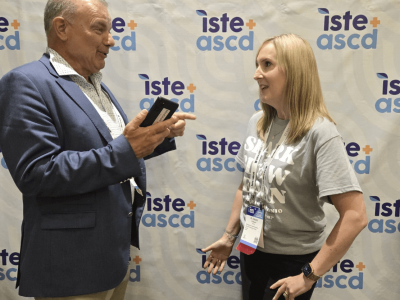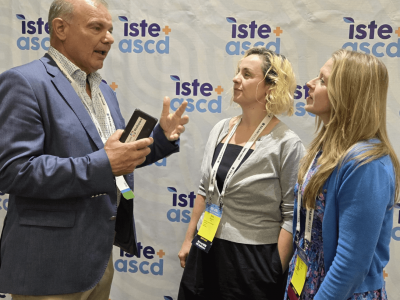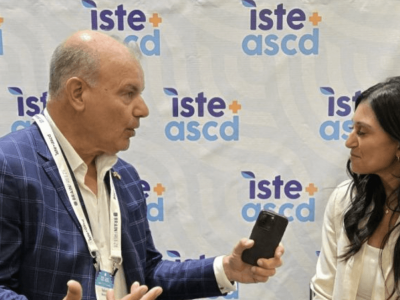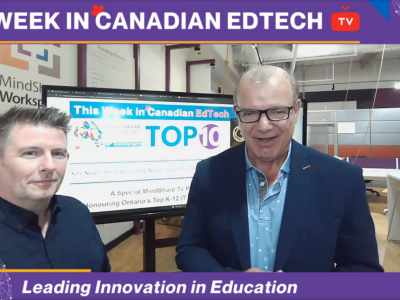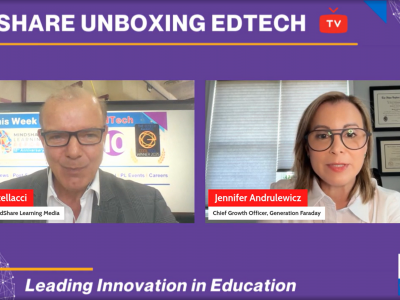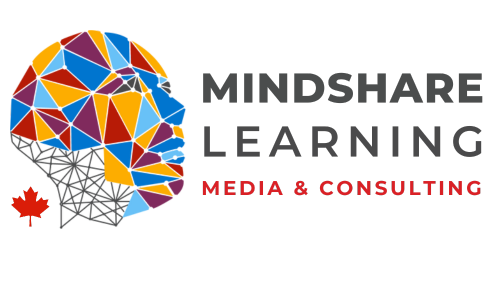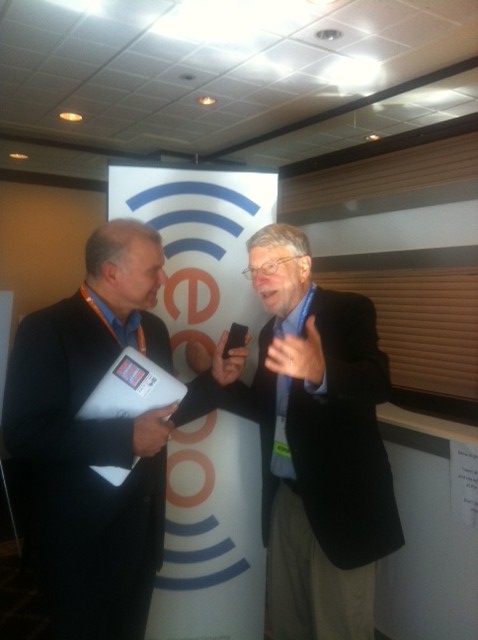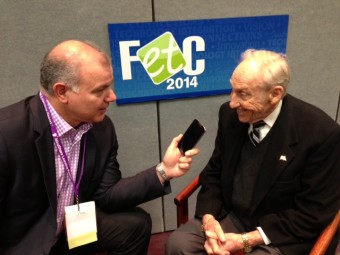 by Timothy Gard, TDSB Educator & MSL Report Contributing Writer
by Timothy Gard, TDSB Educator & MSL Report Contributing Writer
We have set a milestone! MindShare Learning has now officially finished the 7th year of our annual MindShare Learning Digital Video contest where teachers, students and schools from across Canada submitted videos showcasing the innovative, inspiring and engaging ways technology is being infused into teaching and learning. Technology is making a difference; it’s enhancing the way students are collaborating, creating, solving problems and communicating to the world at large. Technology in the hands of innovative and inspiring teachers leads to students who become more engaged in their learning, who are able to use technology, as Seymour Papert once penned, “…as a constructive medium to do things that they could not do before, to do things at a level of complexity that was not previously accessible to children.”[1] We’ve reached this stage. Students, with the guidance of teachers, are entering into learning contexts that are allowing them to engage in real-world problems with real-world solutions. They are involved in rich tasks through the process of inquiry, aided by the power of technology, to venture far beyond what was conceivable even a short time ago. This is now the norm.
We are seeing this more and more in the video submissions we’ve received over the course of the past seven years. This year is no exception. We’ve seen vignettes of children creating their own learning contexts, delving into inquiry, designing, capturing and explaining their own learning using the tools of technology. Indeed, much of this learning could not take place without the ever-growing and expanding world of educational technology. There is a growing interest in providing our education systems with technology that addresses specific needs; no longer do teachers need to ‘tweak’ a technology to do something innovative – technology now exits for schools from adaptive learning products to large-scale collaborative suites ‘in the cloud’ built by the likes of Google and Microsoft. The reasons are simple: all countries see that the future will be infused with technology at every level and in every way. To ignore education in this process is tantamount to producing students to exist in a world where life is static and change is an anomaly. Further, because of the focus – and need! – to transform education with the aid of technology, companies and start-ups see the opportunity to grow successful businesses. In short, there’s money to be made! In the video submissions we have seen an ever-increasing use of technology and tools that have been made specifically for the teacher, student and classroom. I expect that this will only grow but with one difference. I see students creating their own technology solutions for their own learning. With the growing demand for coding skills students will begin to ‘break out of the box’ even more and re-condition their learning environments.
The submissions we received were inspiring. Students and teachers were genuinely excited about the work they were doing. And the learning was evident. As one judge noted,
Students seem to have a deep understanding of the digital world. They are learning that it can be manipulated and they are learning how to use it and create it. They are also learning to enjoy it by building their own games and robots.
A deep understanding of the digital world doesn’t come without a need to teach responsibility about each student’s digital footprint. The Web is a world repository of information that never truly goes away. In one of the winning digital submissions the teacher had the students research her digital footprint. They were not allowed to bring in their own devices before they first passed this digital citizenship ‘test’. Once the students passed this evaluation they were granted a tech license that allowed them to use their own personal devices in the classroom. The students were expected to follow the ‘rules’ that were established for using their personal devices, and like any license, it could be suspended when used inappropriately.
The judges – last year’s winners of the MindShare Video Contest – also noted that technology was used across the curriculum. Several videos showcased global connections and students were involved in social media and creating multi-modal productions that revealed a great deal of creativity:
Absolutely amazing! The variety of ways that technology is interwoven into this classroom is inspiring! The diversity of technology in this classroom and the global connections are wonderful!
No doubt the technology integration was inspired by the teacher’s understanding of the context in which students live and the impact that technology can have in a truly 21st Century Learning environment. Teachers are the ‘change agents’ in these dynamic classrooms and students soon adapt to and are transformed by the tools that the classroom teacher introduces into his or her program with the intent of modifying and redefining learning that truly impacts student learning. These videos were great examples of ‘real-world’ classroom contexts; teachers were applying a deep understanding of pedagogy, of student development and ways to manage classrooms so that students’ needs were met in differentiated ways.
In short, the videos submitted to the MindShare Digital Learning Video Challenge were a window into the realities of 21st Century learning. We are moving from small pockets of innovation across the various districts of this great country of ours to broader, richer, deeper and more powerful examples of what technology – when properly used and implemented – can do for teachers and students in the lifelong journey of learning. As I reflect back over the years of judging this contest I must confess that I am overwhelmed with the creativity, innovation and excitement that this kind of learning can generate and inspire. What are you waiting for? Jump in and explore the grand new adventures that both you and your students can experience through the power of today’s 21st Century tools. As noted by another judge:
This class uses technology in so many creative and fun ways and it’s clear the students have a lot of fun with it. I am very impressed with their digital citizenship …they use technology to learn and display their learning. They are also learning using social media. They also have a great forum for parents to be involved. It’s an excellent example of the 21st century classroom.
I would pluralize the last sentence: “They were excellent examples of 21st Century classrooms.” As stated above, this is now becoming the norm.
Thank you to all teachers and students who submitted your fabulous examples of teaching and learning using technology! Carry on to brave new worlds!
— Timothy Gard
[1]Papert, S. (1998, June 2). Child power: Keys to the new learning of the digital century [lecture transcript]. Paper presented at the Eleventh Colin Cherry Memorial Lecture on Communication, Imperial College, London, UK.
